Introduction about Time Museum in Tehran
In this article, we want to introduce you to Tehran's Time Museum and all the sites and attractions of this museum.
This article is one of the series of articles on Hoteloneclick site, designed to familiarize travelers with Tehran's tourist attractions.
In this article, we will try to explain all the historical attractions in Tehran's Time Museum, which is one of the tourist centers in Tehran, along with its details. This article is actually the tourist guide of the Tehran Time Museum.
In this guide, you will be introduced to the different sights of the Time Museum.
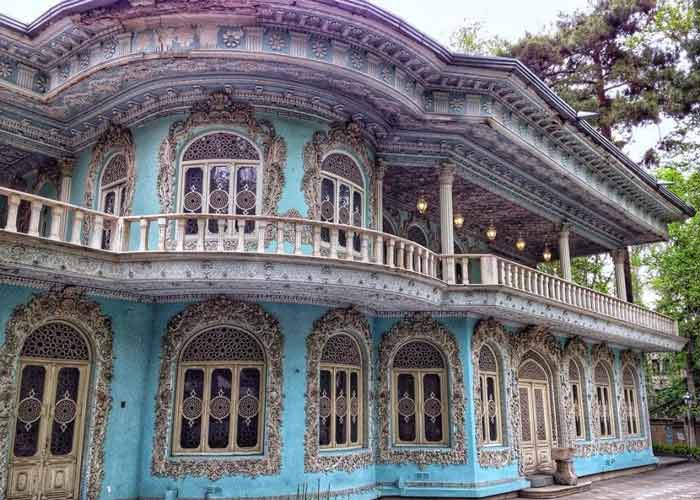
- Why is the Tehran Time Museum a historic attraction in Tehran?
- Introducing the Time Museum - Iran's first clock museum
- Time Museum Attractions
- Museum's environment sights
- 1. Sundial Clock
- 2. Water clocks
- 3. Mechanical Water clocks
- 4. Oil Clocks
- 5. Dragon Boat
- 6. Rope Clocks
- 7. Candle Clocks
- 8. Sand Clocks
- Indoor attractions of Time Museum
- 1. 1st floor: Take a look at old European clocks
- 2. 1st floor: Esfahani Room
- 3. Second floor: Hooshang Forootan artworks
- 4. Second floor: tools for repairing clocks
- 5. Second floor: custom made watches
- 6. The second floor: Measuring day, month and year
- 7. Second floor: Celebrities' watches
- Hossein Khodadad's House | the host of Time Museum
- Time Museum facilities
- Access to the Time Museum
- Visiting time
- Conclusion
Why is the Tehran Time Museum a historic attraction in Tehran?
One of the historical sites of Tehran is the Tehran Museum of Time.
Blue and plastered building in the middle of a garden where you can review the historical passing of time.
Today at Hoteloneclick you read about the architecture of the Time Museum, learn about the Time Museum’s visit information and know the artifacts in it. Join us to tell you where the museum is and what its waiting for.
The reasons for choosing the Tehran Time Museum as one of the most important tourist attractions of Tehran can be for the following reasons:
- It is the first time museum in Iran.
- Interesting and special artifacts with the theme of time can be found in this museum.
- Museum building is one of the old houses in Tehran and its architecture and decorations are very interesting.
- It has a nice and relaxing atmosphere and is a good place to spend good times.
- There is a famous café restaurant that offers the opportunity for tasting different delicacies.

Introducing the Time Museum - Iran's first clock museum
We all have a particular definition of a museum in mind and most consider it an exhibition of monuments.
Maybe this imagination is a bit different in Time Museum because you find it fascinating and, even if you don't like historical objects, you are attracted to the environment.
It is a blue building in the middle of a beautiful garden with plaster, mirrors, Mogharnas(vault) and Girih work.
In this Qajar building which was once the home of Hossein Khodadad, you can see a fascinating collection of watches and devices for measuring time as well as a unique display of Iranian art and architecture.
In this museum you get acquainted with old Iranian and foreign clocks from France, Switzerland, England and Germany.
You will also find time devices for guarding shift, wrist watches as well as dual-engine watches, you can take a look at clock repair tools and, of course, enjoy the unique Qajar building.
In a part of the museum you will also find chronological tools and documents and Iranian calendars.
It is good to know that the name of this museum has been on the list of Iran's National Art works since the year 2003.Prepare yourself to go to the first Iran Time Museum.
Time Museum is one of the most important recreational places in Tehran. If you have not traveled to Tehran yet, you can select the best Tehran hotels and reserve Tehran hotels in our site.
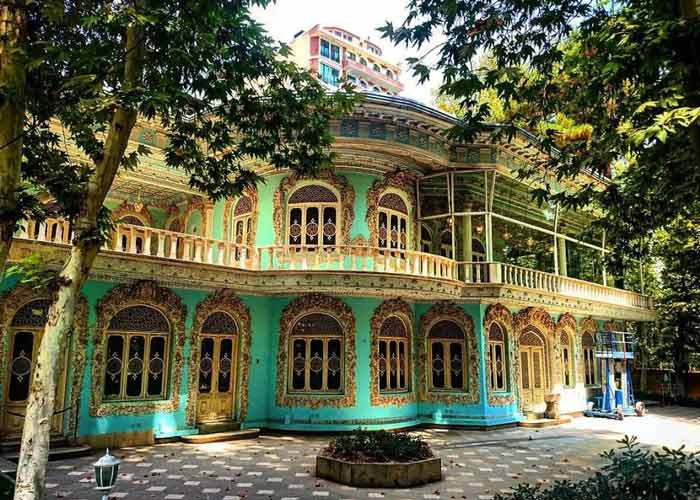
Time Museum Attractions
The museum's timing tools are displayed in a number of sections, including clocks, mechanical watches and pocket watches (pocket and wrist) and time measuring tools. You can have a different journey in history at the Time Museum. This different journey begins exactly when you take a step into the Time Museum Garden.
Museum's environment sights
We've said before that the museum is in a garden that gives you an interesting space. You can see the following objects before you enter the museum building.
1. Sundial Clock
Sundials were time-measuring devices that were invented 5500 years ago. In these types of watches, there is a vertical wood called the indicator.
The sun shines on the indicator, casting a shadow on the horizontal surface whose size determines the time. Sundials were used in Europe until the 18th century and their samples are still found on the walls of churches and old houses; interestingly, there were also small sundials for traveling time.
Time Museum is one of the recreational areas near the Espinas Palace Hotel in Tehran. If you have not booked your hotel yet, you can use the following link to book Espinas Palace Hotel in Tehran.
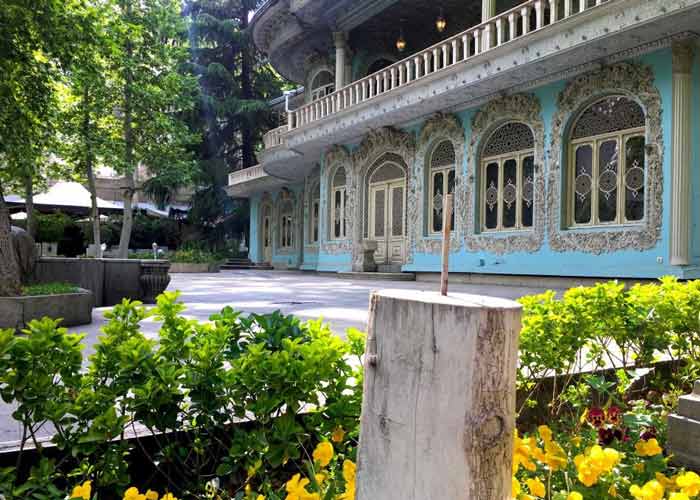
2. Water clocks
This clock works using a uniform flow of water. They used to pour water in a graded container in the past. This water would drip out of the bottom hole of the container and the remaining water level would indicate the time. In ancient Egypt, this watch was used to measure court talk time.

3. Mechanical Water clocks
After the use of water clocks in Greece, there were improvements and mechanical water clocks emerged.
In these types of clocks, water flowed from the upper reservoir to the lower reservoir, resulting in elevated levels in the lower reservoir.
There was toothed wood in the tank with a cork end. As the water level rose, the cork was pulled upward and the toothed stick was raised. The timber teeth were engaged with gears and the hand moved to indicate time.
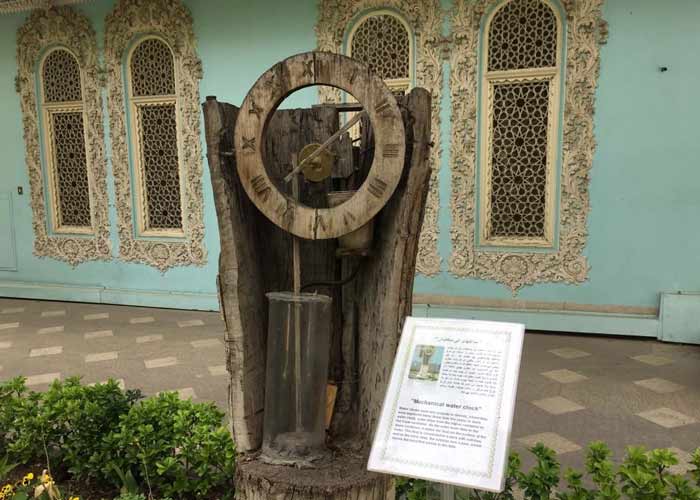
4. Oil Clocks
The oil clock has a graded tank in which special oil is poured.
There was a wick at this clock that, when turned on, used the oil in the tank as fuel, and the time was measured by degrees on the tank depending on the amount of oil remaining. This device would show both time and made lights during the night.
Darakeh is one of the most famous place to sightseeing in Tehran. You can reserve Tehran Grand Hotel to access it easily.
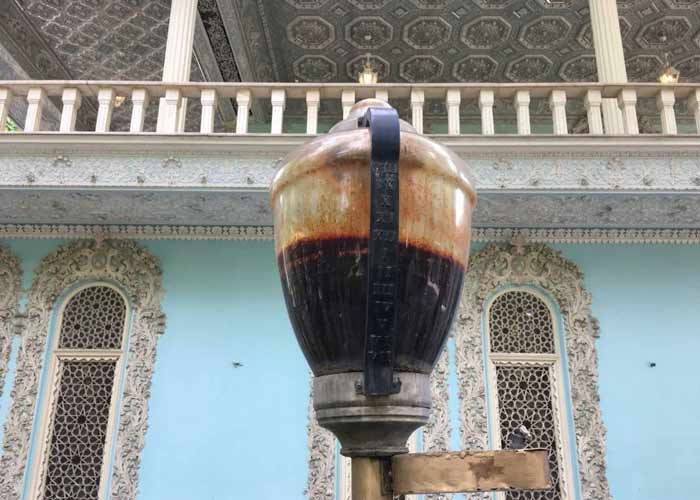
5. Dragon Boat
Hearing the name of the dragon boat you can think of anything but a clock. You might think something is wrong. No! there is no mistake, and the title refers to a type of Chinese fuel clock that looks like a boat.
In the middle of the boat, the candle was put vertically, and some weights were hung at a certain distance from some ropes along the boat.
As the candles burn and the flame approaches each rope and burn, those weights fall into the metal container beneath the boat and make a Deng sound. The number of weights and the sound of Deng Deng made showed time to people.
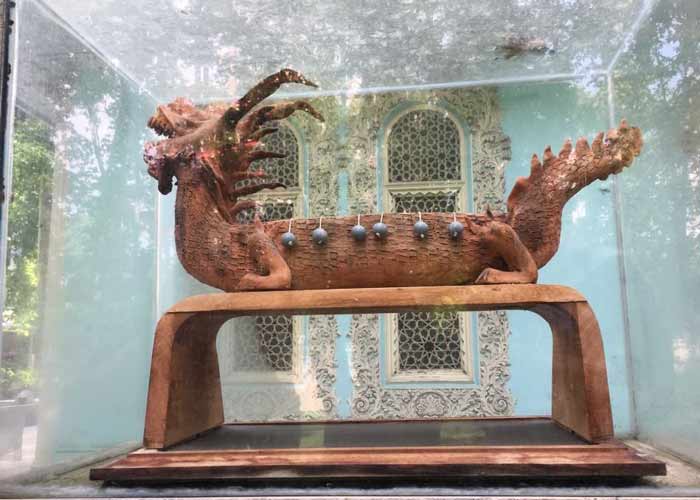
6. Rope Clocks
A rope clock is also a type of fuel clock that consists of a number of ropes. At the surface of the rope there are nodes at equal distances that are somehow degrees of time. Burning the rope would destroy the nodes and you can measure the time with respect to the remaining nodes.
Time Museum is one of the recreational areas near the Parsian Azadi Hotel in Tehran. If you have not booked your hotel yet, you can use the following link to book Parsian Azadi Hotel in Tehran.
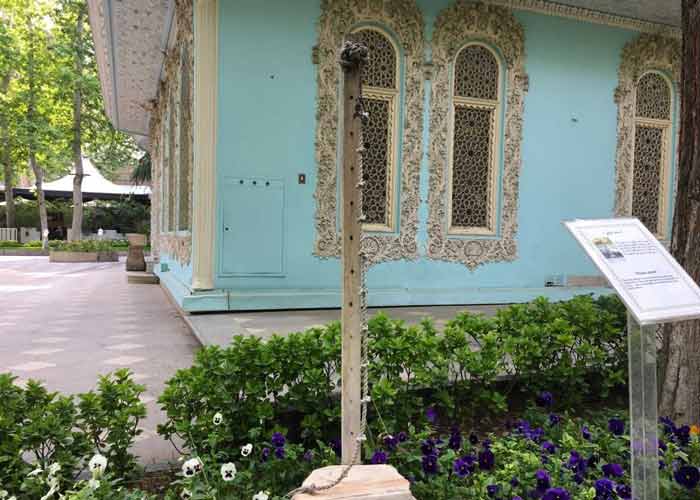
7. Candle Clocks
In this type of clock, the body of the candle is calibrated to measure the time. You can light the candle and know the time from the remaining degrees.
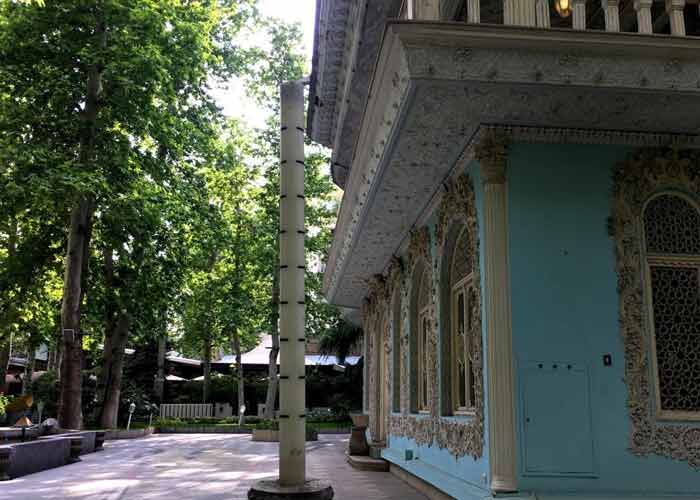
8. Sand Clocks
In these types of clocks, sand is transported from the upper reservoir through a narrow hole to the lower reservoir, and the time is found out by the amount of reservoir sand. Most of these clocks are useful for measuring short portions of time.

Indoor attractions of Time Museum
When you enter the building, you will find several sections, each with its own private objects:
1. 1st floor: Take a look at old European clocks
Take a step into the large first floor lounge and take a look at the clocks made from the 17th to the 20th century. Here you will find mechanical weight clocks, and you will find examples such as pendulum, desktop, wall and standing clocks.
The clocks have been artfully decorated, indicating the importance of clock decorations in the past.
Maquette of clocks with old engines, Louis XVI and Napoleon III clocks are parts of this part, attracting attention with their distinctive shapes and forms. These clocks show a mix of art and clock industry and various arts such as sculpture, enamel, mosaic, and so on.
Some of these clocks were gifts received by political men during their travels to other countries, and others were personal belongings.
Another interesting thing of this part is a bronze clock made in France that has gold cover. This clock is a type of shelf or desktop clock and belongs to the 5th century.
A figure of Homer - the epic poet of the Greek - is on this clock and is adorned in the style of Louis XVI.
Of course, not everything ends in clocks; when you raise your head a little and look at the ceiling, you will be obsessed with its design and forget about the time.
Artistic plaster works have been designed with a mental design in mind, and according to the documents available, the plaster masters have implemented these decorations vertically.
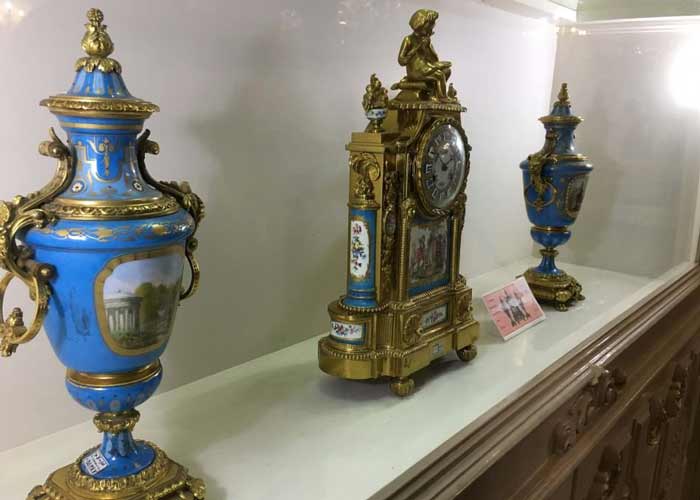
Time Museum is one of the historical sites near the Esteghlal Hotel in Tehran. If you have not yet booked your hotel, you can use the opposite link to book Esteghlal hotel in Tehran.
2. 1st floor: Esfahani Room
Hossein Khodadad's love for Iranian art did not end with artistic plaster. He chose a special room in the building and asked the masters to design it differently from other parts of the building.
There is a kind of plaster in this room in which deep shapes are created in the shape of plaster containers. It is inspired by the music room of Ali Qapu Palace of Isfahan and other Safavid monuments. The ceiling of this room is also adorned by the design of the Isfahan carpet and the masters have used brick designs to make the roof.
99% of the ceiling is copper and 1% is gold.
Decorating this room began in 1973 and ended after 3 years. One of the unique decorations of the Esfahani Room is the iconic plasterboard of Adam, Eve, Abel and Cain in the Garden of Eden, located on the altar.
The gold color of this room comes from the gold sheets used in the decoration and the symmetry of the embroideries has doubled the beauty of the space. The design of the glass in this room is also interesting and designed to prevent insects from entering it.
It is good to know that Javad Rostam - a famous miniaturist at that time - introduced three brothers named Rouhani, to perform the plaster work in this room. Illumination was done by Isa Bahadori, one of the masters of Mahmoud Farshchian and the student of Kamal al-Molk.
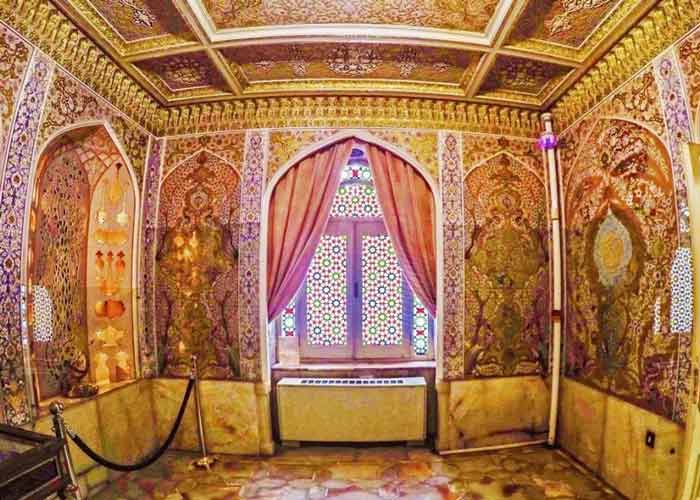
3. Second floor: Hooshang Forootan artworks
A part of the second floor is dedicated to the Hooshang Forootan artworks. The reason for displaying his arts is that he has used the unusable clock pieces and made a collage with these pieces and with this he has shown a different art to the world. Hooshang Forootan Started making these arts since 1998 and gradually make them more creative and stranger. His artworks found a way to the other countries and in 2013 and 2014 were displayed in America.
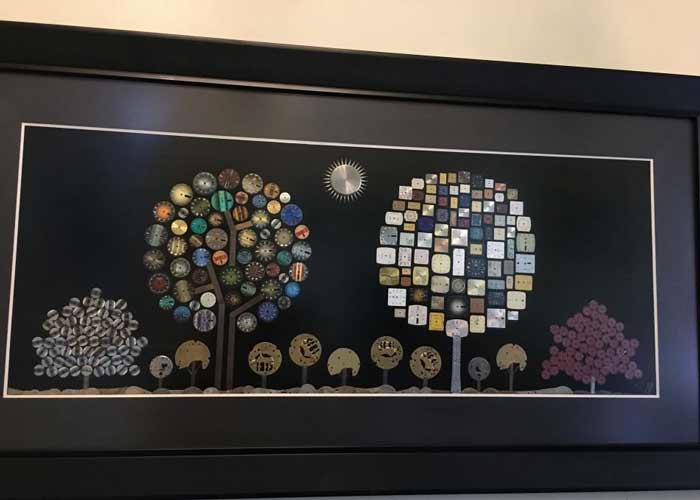
4. Second floor: tools for repairing clocks
There is a circular showcase in the second floor that has different devices on display. Next to it there is a list of these tools and you can find them in the showcase by their numbers.
These tools include clock knife, ramrod, tools for opening the back of clocks, brush, hammer, file, plier, clipper and more.
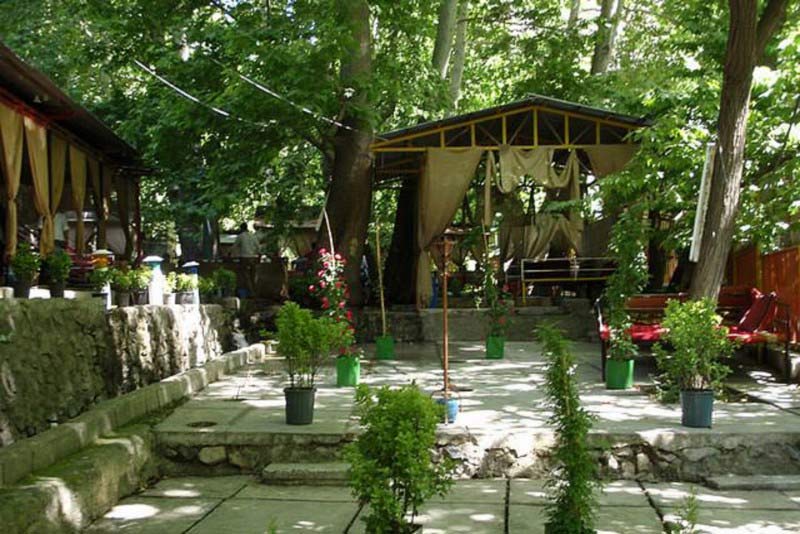
Time museum is one of the most interesting places to view by tourists in Tehran. You can book Tehran Ferdowsi International Grand Hotel to see it.
5. Second floor: wrist, pocket and custom made watches
The second floor of the museum has many attractive things some of which are:
- Time clocks or clock card machine
There is a shift clock in the Simplex American company that is said to belong to the train station.
With the increase of jobs in the late 18th century, there were some timing devices for registering the time of arriving and leaving the company.
Bundy and Dey companies were famous companies of this field. At that time the employees had their own keys and they inserted the key in the hole of the device so the engraved number on the key along with the time was written on a paper in the device and a report was made.
- Qajar Clocks
There are some clocks in the second floor that belongs to Qajar era from which you can see the sundial clock of Nasereddin Shah and clocks of Ahmad Shah and Mozaffareddin Shah.
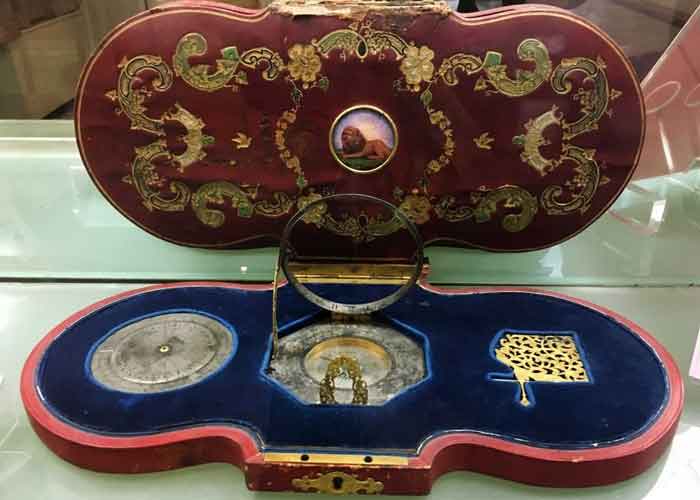
6. The second floor: Measuring day, month and year
Time measuring doesn't end to hours, minutes, and seconds, and we have to account for the day, month, and year to arrange our work. Part of the Museum of Time deals with this, too, in which you find documents and tools related to Jalali's chronology and its history in Iran.
In this section, you will see astrolabe which is one of the oldest astronomical tools, and referred to as a permanent calendar. In a corner you will see the celestial sphere, or sky sphere, which is a hypothetical, concentric sphere with the earth, and used to measure time in the past.
The prominent figures in the writing of the calendar are also introduced to you in this section, and the replica of the oldest Iranian document with dates (the Bistoon inscription) is in front of you. The Iranian Religious Calendars are also kept in this section, among which are:
Hebrew, Zoroastrians, Armenian, Ethnic Tabari and Deilami, and ethnic Kurdish calendars.
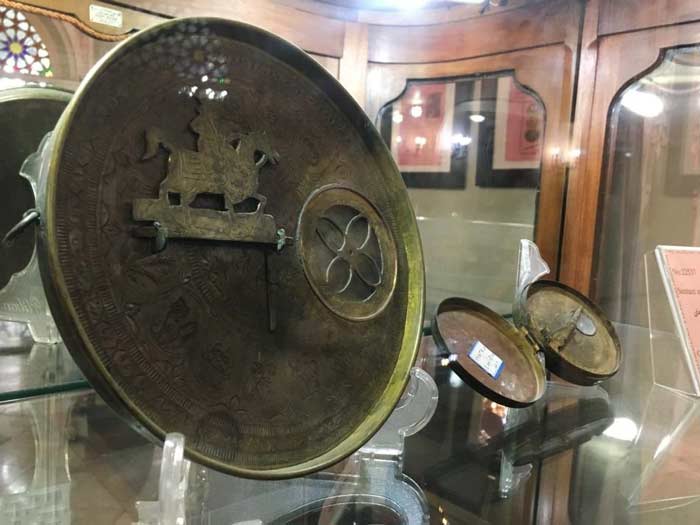
7. Second floor: Celebrities' watches
One of the fascinating parts of the museum is the collection of watches of celebrities who have been donated to the museum by themselves.
In this section, you will find donations from people such as Jamshid Mashayekhi, Mohammad Ali Keshavarz, Ehteram Boroumand, Davood Rashidi, Aminollah Rashidi, Mostafa Rahmandoust, Dr. Hassabi, Dr. Parviz Kordvani, Shahid Avini, Shahid Mehdi Bakeri and ...
To accommodate in Tehran and visit Time museum, you can stay at Ibis Hotel or Novotel hotel in Tehran. If you have not booked your hotel yet, you can use HotelOneClick booking page to reserve any hotel in Iran.
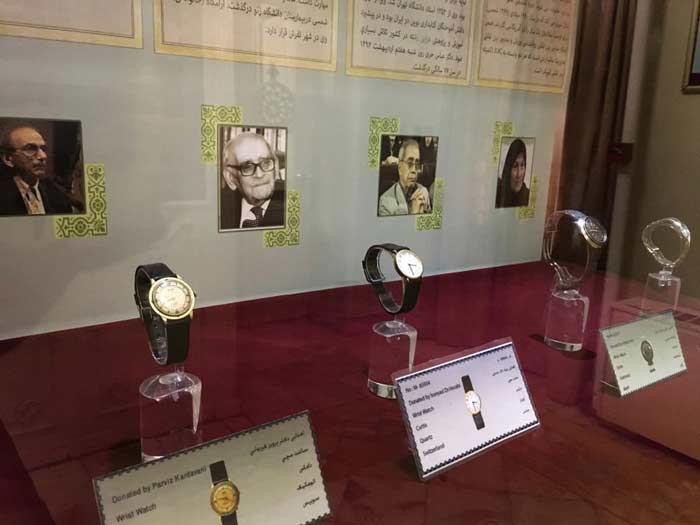
Hossein Khodadad's House | the host of Time Museum
The Time Museum is located in a Qajar building dating back to the time of Mohammad Shah and Nassereddin Shah Qajar.
The building is home to Hossein Khodadad, an Iranian businessman and entrepreneur, and has been at the disposal of the Mostaza'fan Foundation since the Islamic Revolution. The museum building has 700 meters of infrastructure and is located in a beautiful area of 600000 square meters.
Buying of property by Hossein Khodadad
It is a two-story building dating back to more than 80 years and was built during the Qajar era.
The garden was once part of the Ferdows garden and was owned by Moeir Al-Mamalek, son-in-law of Nassereddin Shah. After his death, his son Doost-Ali Khan Moeir al-Mamalek became the owner of the garden and, since he was not interested in it, he cut down the trees one by one to be used as firewood in the furnaces of Tehran.
In 1925, a man named Abdullah Khan Mansour bought the property from Doost Ali Khan and owned it until 1967. Hossein Khodadad bought the property in the same year; at that time the building was a one-story mud-brick garden with a wooden skeleton.
The beginning of dramatic changes in the house
By the order of Hossein Khodadad, the wooden skeleton was replaced by an iron skeleton and changes were made within 10 years.
Hossein Khodadad made dramatic changes to the building by retrofitting the building and building a floor to the ground. His keen interest in revitalizing the art of drawing and plastering in Iran led to the work of the best craftsmen in the building of his home and to create an eye-catching and amazing building.
Master of Tile works, the architect of the building, the engineer Ebtekar was chosen as the building consultant, and Haj Ramezan Abbassian did some work on it. Designers such as Haj Abdul Karim Navid Tehrani, Farhad Yahypour and Haji Ali Sheikh also worked on the house.
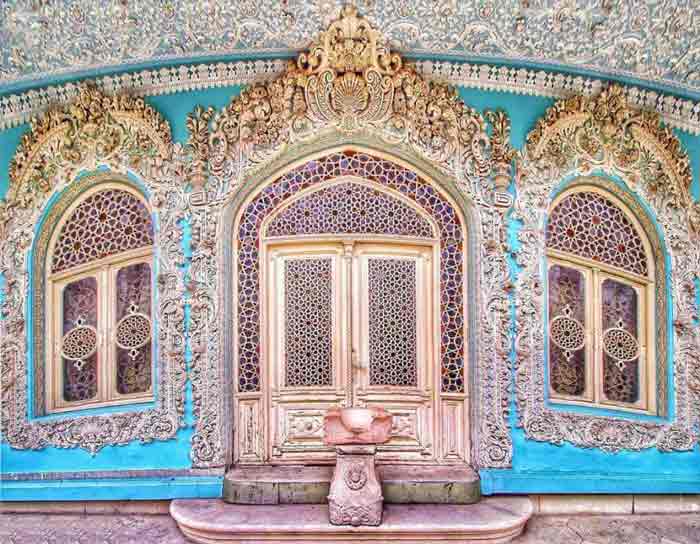
Decorating the building with plaster art
It took 12 years for the plaster art to be finished and finally the house became a work of art in 1977. Inside the building, we find a combination of Iranian and foreign styles, and in the facades and the margins, we can see a mix of Qajar and modern styles.
On the first-floor ceiling and columns, plasterboard art has also been done on mirrors, and masters such as Haj Mohammad Kashi and Hossein Bahonar have done the Girih art on wooden doors and windows to exalt the beauty of the building. On the walls around the building, there are beautiful brickworks and vaulted works, all of which make the Museum of Art a masterpiece.
The destiny of the house after Hossein Khodadad
Hossein Khodadad lived in this house for a year and moved to America before the Iranian Revolution. This building and all its assets were confiscated by the Mostaza'fan Foundation. It was in June 1999 that the building became the Museum of Time and started to work as the first museum in the country.
Time Museum facilities
You can access the following facilities at the Time Museum:
- Ribar Restaurant Cafe: One of the notable amenities of the Time Museum is Ribar's café, which is known for its delicious breakfasts and charming atmosphere and attracts many people to this place. The restaurant café opens at 9 am and serves its customers until midnight.
- Restroom
- Praying room
- Time Museum Gallery: A place to buy works of art including paintings, jewelry, crafts and ...
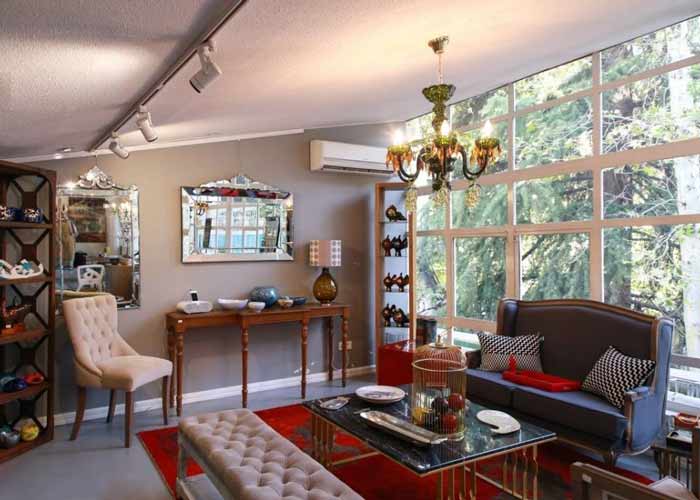
Access to the Time Museum
Address: Parzin Baghdadi Ave., Zaferaniyeh St., Tehran
Ways to access public vehicles:
1. Bus
The Tajrish-Rah Ahan BRT line crosses Valiasr Street. Take off at the Ferdows Garden Station and reach the Museum by walking 500 meters.
2. Subway
The nearest station to the Museum of Time is Tajrish, which is about a 20-minute walk to the museum where you can take a taxi to Zafaraniyah Street, or take the bus to the Ferdows garden station.
3. Taxi
You can access taxis whose destination is Tajrish from different parts of the city. If you cross Valiasr Street, head to Zafaraniyah Street and seek the assistance of a taxi driver if the route is different.
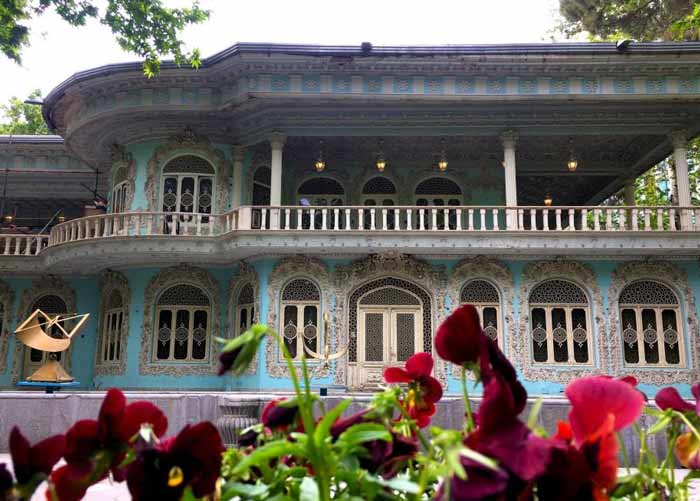
Visiting time
First half of the year Saturday to Wednesday from 09:00am to 6:00 pm and Thursdays and Fridays and holidays from 10:00am to 6:00pm
The second half of the year Saturday to Wednesday from 09:00am to 5:00pm and Thursdays and Fridays and holidays from 9:00am to 5:00pm

Conclusions for the Tourist Guide to the Time Museum
The first Iranian Time Museum is a different museum that takes you on a journey through time. You understand in this museum how those simple sundials became the today's complex wristwatches and changed over time with glaze.
In addition, the museum environment is a good place to forget about your concerns, and you can count on that to have a good time.
Tell us about your experiences in touring Tehran.
Have you ever visited the Museum of Time?
What other attractions do you know in Tehran?
You can also use the comments section below to share your photos and descriptions of the museum at Hoteloneclick.
If you have any comments about the Museum of Time in Tehran which is not mentioned in this article, you can write in the comments section of this guide.
If you find this guide helpful, we'll be happy if you share it on social networks.
Our references to prepare Darakeh Travel guide:
we have used many references to prepare this article. They are some of them in the following:
- Time Museum in Wikipedia
- History of Time Museum
- Guide of Time Museum for tehran tourist
- Why you must see Time musuem
